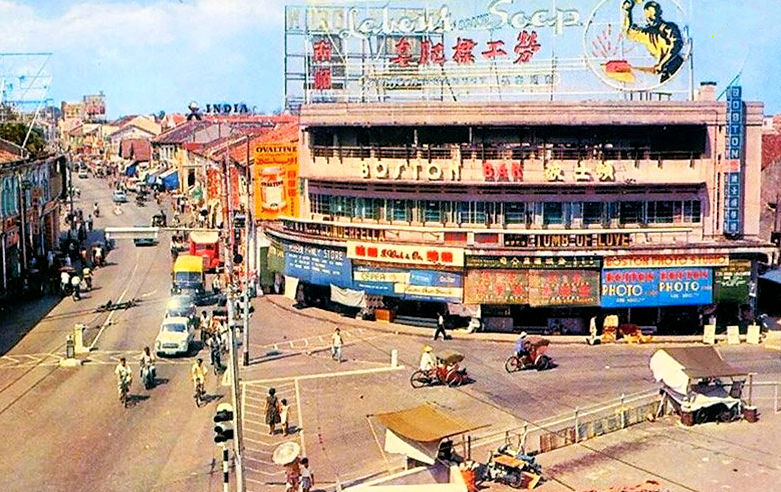|
|
||
|
||
|
Privacy Policy | Editorial Policy | Profit Policy | Join the Association | List of Members | Contact us | Index | Links |
||
|
Back Go to page: 1 2 3 4 5 6 7 8 9 10 11 12 13 14 15 16 17 18 19 20 Forward
|
||
|
My Story.
|
||
|
|
||
|
Ian “Tiny” Ashbrook.
Some highlights from a Full Career in Aviation.
Ian (Tiny) Ashbrook served in the RAAF as a pilot and professional engineer in a range of command, policy, flying and specialist positions. He was awarded a Chief of Air Force Commendation in 1997 for the financial management of RAAF Operational Logistics and an Order of Australia in 1998, primarily for his contributions to RAAF airworthiness policy. He took early retirement from the RAAF in 1997 to become an Executive Director of Rolls-Royce Australia Ltd and associated regional companies and Regional Director - Defence for Rolls-Royce plc, London with prime responsibility for Defence business in the Australasian region. He retired from Rolls-Royce in 2010 and lives in SE Qld, where he is involved in a diverse range of activities.
Ian Ashbrook was born in Hamilton Vic and in answer to questions relating to who he knows in the Hamilton area responds ‘no one really as my whole life in Hamilton was about three weeks’. Ian would have been born in Port Moresby, where his mother had been raised between the wars. Her father had taken his family to Papua in 1919 where he subsequently established an engineering business specialising in rubber and copra production but, also with a marine slipway on Port Moresby’s Fairfax Harbour
However, in 1942, with the Japanese coming over the Owen Stanley’s Ian’s mother and her sister were evacuated to Cairns with two suitcases each and they subsequently made their way to stay with an aunt in Hamilton, Vic. Meanwhile, Ian’s father (who was the accountant of the trading company Burns Philp) was evacuated a little later, joined the RAAF and spent most of the war back in Papua and New Guinea as a meteorologist.
After spending some time at Coal Point while his father trained at Rathmines, the RAAF Catalina base on Lake Macquarie, Ian subsequently spent the war with his mother and aunt, in an hotel at Coffs Harbour. When the war ended, Ian’s father made his way, following discharge from the RAAF, to Coffs Harbour only to learn that his wife had been diagnosed with a short life expectancy terminal illness. Unable to get seats on a train because of troop priorities, he bought an old Austin 7 Tourer and transported the family to Sydney where the diagnosis proved incorrect.
The family then returned to Port Moresby in Jan 1946 taking the Austin 7
with them to become the first civilian car in
In 1947, the Austin was shipped to Cairns and the family drove to Sydney, a not insignificant adventure at that time, with Ian perched in the back. Not long after leaving Cairns, Ian noted that it was hot in the back to which the response was ‘stop complaining’. A little while later he again commented that it was very hot in the back, again to be exhorted to ‘stop whinging’. However, the excited yell that there was smoke and fire in the back finally got some attention. It turned out that the rear brakes had been overtightened in the servicing in Cairns and the brakes had overheated and caught fire.
In 1952, at the age of just nine, Ian chose to go to boarding school in Charters Towers and, as a tall, gangling weakling, very swiftly learnt how to keep his head down in a school where most of the pupils had been raised in the rough and tumble of large cattle properties. This, though, was good grounding for future survival and the keeping of one’s own counsel.
During one school holiday in 1953 Ian, who had flown to and from Australia on numerous occasions in DC3 and DC4 aircraft, had the opportunity to accompany his father in a chartered Qantas Catalina to West Papua landing on Lake Murray and the Fly River.
Ian at the blister of a Qantas Catalina
At both places, locals met the Cat in long single hull canoes paddled by up to 50 standing ‘warriors’ painted and dressed in basic lap-laps and Ian, who stayed on the aircraft at both stops while his father attended to business ashore, also observed many large crocodiles basking on the river banks.
Needless to say, movement from the Cat’s blister to the top was done carefully gripping on to every rivet and apart from the experience of occupying the blister for take-off and landing, surrounded by swirling water as the aircraft accelerated, it was Ian’s first experience actually flying an aircraft which he did for most of the trip.
The Catalina had similar engines to the Caribou and flying it, from memory, was also very similar in the cruise with no auto pilot and basic navigation instruments. The overnight stay was also very memorable at Kerema, which was then an isolated village on the Gulf of Papua. Almost two decades later numerous similar flights across the Gulf of Papua, when Ian was flying Caribou aircraft, brought back memories of the Catalina adventure.
The other memorable aircraft was the Sandringham flying boat, a civilianised version of the Sunderland maritime patrol aircraft. Qantas also operated Sandringham’s out of Port Moresby and the family spent some time on Samarai Island, on the Eastern tip of Papua, where his father managed the Burns Philp activities. Samarai was only accessible by boat or amphibious aircraft; hence several Sandringham flights.
Following a severe bout of malaria in 1954 with a touch and go few days
in Charters Towers hospital and a communications failure by the school,
Ian was withdrawn by his mother and finished 6th class under the NSW
school system in Port Moresby. Schooling in Port Moresby only went to
6th class, so in 1955 Ian commenced school by
Life was good for a young bloke in Port Moresby in the 50’s.
Sadly this came to an abrupt end in Aug 1955 when the family pulled out of Port Moresby to Brisbane and Ian found himself back in the constraints of 9.00am - 3.30pm at Ascot State School.
Changing State school systems was even harder in those days and when the family moved to Newcastle in 1957, Ian remained in Brisbane to complete the Qld ‘Scholarship’ year, which was 8th year primary, while NSW was by then two years into secondary school; so, the move to NSW was difficult culminating in a year at the now defunct Newcastle Junior Technical School (which finished at ‘Intermediate’ when most students joined the work force). However, with extra coaching and some overtime, Ian managed to undertake the ‘Leaving Certificate’ at Newcastle Boys High School.
It's OK to let a fool kiss you, But not OK to let a kiss fool you.
Not long after arriving in Newcastle, Ian was introduced to 16 Flight
Air Training Corps (ATC) which paraded in the Parachute Training Flight
hangar at RAAF Williamtown on Fri nights. This was to have a big impact
on his future and
RAAF Academy was a tough environment and many of the practices would be
unacceptable now with ‘bastardisation’ rife and failure high (we started
with 28 and graduated 12); but, that early boarding school experience
kicked in and the art of ‘invisibility,’ even at 6’4”+ (194cm) came into
daily practice. That I had got into the Academy was interesting as at
the main interview the pilot member (SqnLdr (later AVM) Bill Collings –
left) took great exception to my desire to do an engineering degree ‘as
a fall back as the future of pilots was uncertain’.
After two years at the Academy, I then spent the academic terms at Sydney University, including an extra year, along with three others after the University took exception to our commitment and performance. This allowed me to pursue my best decision yet by getting married and subsequently Carolyn helped me submit a thesis on ‘A Monte Carlo Simulation of Hyper Velocity Impacts in a Rarified Atmosphere’ (applicable to designing an ablation layer for reentry vehicles). I held onto this, along with my Uni notes, for nearly 20 years and only reluctantly eventually threw them out when I realised that I’d never subsequently opened any of it and can’t recall directly applying anything that I’d actually learnt at Uni; but, it was a great experience!
Pilot’s Course followed, again with a high failure rate; but, I did quite well and ended up at Williamtown, undertook the Vampire Weapon’s Course and flew the Sabre. It was here that I ran into an instructor with whom I had clashed years earlier as a cadet; so, after much handwringing, I requested a posting to fly Caribous in the hope that I could get some experience in Vietnam and be competitive for a test pilot (TP) course. In some respects this was fortuitous as later, in 1982, when I was presented with the opportunity of a Mirage lll conversion, I found that even though the Vampire had been tight, my very long legs had great difficulty fitting into a Mirage.
Flying the Caribou was great. I completed a tour in PNG and received my
Captaincy there as a ‘field’ upgrade by the |
||
|
|
||
|
38Sqn was a very busy job and it was also my first engineering job and without the benefit of even the Engineer Officers Basic Course (DPO subsequently noted this several years later when I was a SqnLdr and wanted me to ‘tick the box’ until I pointed out that I had just rewritten the course syllabus in my then role in Canberra!!). Somewhat surprisingly, the SEngO was at FltLt level although the squadron was flying around 22,000 hours per year with 22 Caribou and another 2000 hours with 3 Dakota aircraft. We had two continuous major maintenance lines running in the hangar and suffered considerable experience and manpower shortages, as we also trained and supplied all of the replacements for 35Sqn SVN. Fortunately, the knowledge and operational experience that I had on the aircraft was invaluable and more than offset the paucity of my knowledge of the Engineer Branch.
|
||
|
|
||
|
de Havilland’s complex at Bankstown. |
||
|
As both SEngO and Maint TP, I was in the fortunate position of being available at short notice to do test flights, particularly at the weekends, and this was invaluable in improving our serviceability numbers. However, I thought that my career was again short lived when, in answer to the continual criticism by the SNCOs of the amount of work (usually up to a week including cylinder changes etc) required on aircraft received from the Deeper Maintenance contractor (Hawker de Havilland), I diverted a test flight from Bankstown into Richmond and gave the ‘troops’ 20 mins to find as many issues as they could. They then wrote them up as we flew back to Bankstown. However, on arrival, I was greeted by an enraged Res Eng (SqnLdr ‘Taffy’ Salvage) who demanded to know where I’d been, who had authorised me and demanded that I accept the aircraft ‘as he had released it’. I stood my ground and fortunately the pre-arranged Caribou arrived to take us all back to Richmond and I left with an even more enraged SqnLdr standing by the rejected aircraft and insisting that he’d have me court-martialled.
On arrival back at Richmond after stand down I decided that I’d better inform the CO, by then at the bar, of what had happened. He was largely disinterested seeing it as an ‘engineers problem to sort out’; so, the following morning, I sat in my office waiting for what was going to occur next. The phone rang and this rather gruff voice said ‘ WgCdr Rockliff, SupCom - I hear you’ve had a run in with SqnLdr Salvage’? I started to respond when ‘Rocky’ stopped me with ‘don’t worry about it. This is just what we’ve been waiting for and you’ve documented it beautifully. I’ll take it from here’. A week or so later when I went back for a further test flight, the SqnLdr could not have been more helpful and the contractor output ‘improved’.
A major headache at 38 Sqn was leave in lieu accumulation and
particularly for duty crew. We maintained a weekly duty crew roster for
all out of hours commitments and with the roster starting early am until
08.00 and then 16.00 until whenever (sometimes through until 08.00 the
following day) and, as required, at the weekend and many flights
occurred out of normal hours. Overtime was also accrued with manpower
shortages on the
After some research and numerous consultations, I proposed that the duty crew roster run from 16.00 on a Thu to 08.00 on the following Thu and that irrespective of the hours actually worked over the week, the crew then went on leave until the following Mon and that this would be sacrosanct irrespective of Sqn commitments. This gave the crew a guaranteed four day break which they could plan around and helped to reduce leave in lieu credits that would otherwise never be recovered.
Better to lose a lover than love a loser.
In 1971, the RAAF celebrated the 50th Anniversary since the formation in 1921, principally with a series of Airshows at the major bases around Australia. To effect this, a display group was formed under the direction of GpCapt (later AVM) ‘Bay’ Adams and each aircraft in the RAAF was represented in the Show which ran to a pretty standard program in Mar/Apr 1971. I was lucky to be selected to fly the ‘slot’ (No4) position in the Caribou display with No4 also carrying the RAAF parachute display team. The shows opened with a major flypast of all the aircraft followed by individual displays. Caribou No1 did the handling display while 2 and 3 did low altitude load extraction (below) and other displays. No4 finally brought the parachutists in for a coordinated drop. Because of the distance involved only a single Caribou was sent to Pearce and we started the shows at Edinburgh, then Laverton and worked our way around through East Sale, Richmond etc with the final show at Townsville. Since the shows were only at the weekends, the whole exercise took about six weeks.
|
||
|
|
||
|
After Townsville, I returned to Richmond, while the other three, flown
by instructors, continued on to PNG with a group of conversion pilots.
The following morning, I was just getting the family ready for a quick
break up the coast when word came through that one of the Caribous
(A4-264) had overshot the runway at Tufi on the NE coast of PNG, and was
lying
All good things come to an end and in Jul1971, I overnighted in Townsville flying a Caribou ferry from Port Moresby. The Mess was in full swing, celebrating/commiserating the officer promotions list that had just been released; however, I was not feeling well, took a quick look at the list and then went to bed. At breakfast the following morning, someone congratulated me on my promotion to SqnLdr so I had a closer look at the list and there I was in an obscure fold. However, on arrival at Richmond, my unwellness had developed into a full-blown attack of Chicken Pox which I had caught from the children and two weeks of misery in isolation (and several months of slow recovery) followed. During this, I found myself posted to Defair as EngP2A to start in early Oct71, I had no idea what this meant and no one at Richmond had even heard of the job. And so, with a face covered in scabs I set off to influence the RAAF as a Canberra staff officer; but, soon found out that I slotted in somewhere between Eileen the Irish tea Lady (yes, morning and afternoon a trolly wheeled into the office and Eileen served us tea and biscuits) and the stray cats that lived in the hedge surrounding the car park which is now the location of ASIO HQ.
On learning of my posting to Defair and as soon as I was able, I arranged to have two lounge suits tailored as the normal dress at Russell Offices for all members was civilian clothes. This made life interesting as, until one learnt who was who around Russell Offices, it was difficult to ascertain who to call Sir.
However, it was pointed out to me that generally the shabbier the suit the more senior the officer and the best dressed usually were SNCOs and WOffs! Seven years later when I learnt of my posting from London to Defair, I had a couple of nice Saville Row suits tailored; but, before I had arrived back in Canberra the rules changed, uniform was to be worn normally at all times and my new suits subsequently saw little wear and sadly made it to the Salvos a few years later, in somewhat pristine but dated condition. |
||
|
|
||
|
By the time that I had arrived at Russell Offices, the job had changed names to TP2A; but, it was the same job within the Directorate of Technical Plans and my WgCdr, TP2, essentially provided career and posting advice for all officers in the Engineer Branch. A complementary section TP5 provided similar advice for airmen and I shared an office with TP5A (Alan Emmerson and later Tom Carlyon). I knew little about the Engineer Branch but TP2A was responsible for maintaining the integrity of a number of large boards, hidden behind locked doors, with tags in unit order showing every established engineer officer post in the RAAF and other tags with each officers name etc. My main job was to keep all of this up to date. Fortunately my boss, WgCdr ‘Chris’ Dent, a Ground Radio officer, was one of the nicest people I had ever met and his subsequent replacement (WgCdr Warren Tassell an Instrument officer) was similar and I learnt a lot, in confidence, about the structure, politics, history and people, from both. In those days there were six Engineer Officer Categories (Aero, Radio (subsets Ground and Air), Armament, Instrument, Electrical and Mechanical).
The Chief Engineer (Air Member for Technical Services (AMTS)) had to come from the Aero category (which caused a lot of dissention) and the retirement benefit scheme which only paid out when officers retired at their full retirement age (55 years for most with senior officers several years later), meant that many officers were just waiting out their time. This was obvious and a real problem. Within the Directorate of Technical Plans, Al Emmerson and I were the only Aero Category officers and most of the more general engineer jobs in Defair were held by non Aero officers eg there were six Armament GpCapts who had to be employed, and only one Armament specialist GpCapt job. At the same time all of the AirCdres (5) and the AVM were Aero!
Drunken man's words often sober man's thoughts.
So, being in DTP was great for career broadening and I soon learnt that every Fri we all went to lunch, most times not to return to work and as the lunch afternoons wore on I can recall being counselled by GpCapt and WgCdr non Aero officers on what was wrong with the Engineer Branch (this was all before breathalysers etc, of course). DTP also was high on the rumour distribution list and one learnt to keep one’s counsel when being pushed for info!
When not contributing to career development TP2A was the general odd job ‘boy’. AMTS (AVM Ernie Hey - right) was by far, at about 10 years seniority, the senior AVM in the AirForce and hence on the Air Board and he was also the RAAF Airworthiness Authority. Ernie refused to have Airworthiness defined in any document and maintained that Airworthiness was whatever he said it was. This of course led to the GD retort that airworthiness was just a dirty word used by engineers to stop pilots from flying. Ernie also didn’t have a staff officer so, de facto, the ‘odd job boy’ acted in this position when required - usually just to collect Ernie’s bar supplies from the Mess and load them into his car or deliver messages. One of my first real jobs was to write a paper presenting the case for some engineer Branch officers to receive flying training as this was being challenged by senior GD pilots. Probably my most significant job initially was to coordinate a Branch review of the proposal by John Jess to revise the DFRDB Scheme. Here I was, a pilot with an engineering degree and about 11 years’ service (8 of which had been on course), suddenly coming to grips with a complex subject of which I had no knowledge and little real interest.
That said and with help from Al Emmerson, we could see some significant
flaws in what was being proposed (where most saw it as a huge
improvement on the existing scheme and, in reality, it was).
Notwithstanding, I pulled together about a 100 page analysis with
suggested changes and when this was sent to the Personnel Branch, much
of it became the RAAF position. Subsequently, the accepted scheme,
addressed many of the issues raised and it
Working closely with the personnel managers, I had learnt to advise if there were any personal posting restrictions etc so, when I decided to do some home renovations myself, I advised DPO that I needed about six months. Wrong!! Despite having pushed for the Test Pilot (TP) training of an engineer pilot every 3 years this did not occur and when Peter Reddel (right) resigned at short notice from ARDU, I found myself laying bricks at night in Canberra’s winter in order to get to Laverton to replace Pete as OiC Performance and Handling at ARDU (then at Laverton) despite not being a TP.
|
||
|
|
||
|
This was a great job, despite the steep learning curve, and I managed to fly a range of aircraft at ARDU and participate in a wide range of tests across the fleet from F111 to CT4 including the Nomad (which was to feature high in my later career) and I regularly flew the MB326 Macchi and occasionally the Canberra, Dakota and Iroquois. My first performance report was to construct a post engine change air-test profile for the Mirage III. Having not flown the aircraft, this required some deep research and then to have one of the test pilots (FltLt Peter Dickens) fly several profiles for analysis. This was a good way to settle in and learn about ARDU. I worked for another good and interesting officer, WgCdr Bert Cairns, who had had a breakdown at some time and was not averse at airing this with ‘I have a piece of paper that says I’m sane. What about you?’ Bert also had a marked aversion to another WgCdr in the unit and whenever the latter stood in for the CO, Bert wouldn’t come to work!!
Bert tasked me with updating the ARDU Non Standard Modification Procedures. ARDU was the only unit outside of Support Command with authorisation to design and fit modifications on aircraft; but, the procedures at ARDU were woefully inadequate to control and document this and there was much resistance by the test community to the introduction of any constraints. So, my first real policy work was accomplished with much careful diplomatic consultation.
Another interesting task was instrumenting the F111 with analogue recorders for trials work. To do this required significant design work and, more importantly, funds. The instrumentation expert was Mr Frank Verinder seconded from Aeronautical Research Laboratories (ARL) and Frank and I did a number of trips by Macchi to Amberley for the design work and then back via Canberra to elicit funds. Frank was a great guy but very disorganised and easily upset. On one occasion we had just pulled up at Fairbairn in the Macchi when I saw the OCs car approaching. GpCapt Bruce Martin was a large, gregarious man who I got on well with and had worked with at Shoalwater Bay when he was preparing to go to SVN as the senior RAAF ‘operator’. On seeing me I got the ‘what’s a b.. engineer doing here’ and at that moment Frank, who had long hair down to his shoulders (this was 1974) removed his helmet and Bruce said ‘and who’s the girl you have in the back’ before exiting the tarmac.
That night in the mess I left Frank before closing to go to bed. The following morning at breakfast someone said to me ‘you’re with the long haired guy aren’t you’? I nodded, to which he responded ‘he punched the OC out last night’!! Wow. I then went looking for Frank and found him the worse for wear still in bed and decided to press on and wait for Bruce to make the first move. But, we were staying two nights so, on return from Russell Offices later that afternoon we went to the mess for the pay night buffet. I saw Bruce at the bar. and while trying to think fast, we walked in, Bruce turned, saw Frank and let out with ‘Frank what are you drinking’? Nothing was said about the night before and the two of them got on famously. Bruce came to see us off the following day and greeted Frank like a long lost friend on our future nights at Fairbairn. To me that was a great example of a ‘big’ man. Someone else could have made it such a big issue.
Much better to want the mate you do not have, than to have the mate you do not want.
However, less than two years into the job I received a phone call one
morning from the OC’s wife. Now SqnLdrs seldom received calls from the
OC let alone their wives and Pat Law threw me when she asked ‘what are
you doing with your
London was also a great experience. Doing the RAF Staff College was a huge plus as it subsequently gave me over 40 close contacts in MoD and, as much of the work as SEngSO London was interacting with MoD, there was always someone who could either assist me or point me in the right direction. The other major activity was the development by Marconi Avionics of the AQS901 system for the P3C which was being updated. The Project Manager of the P3 program was GpCapt Lars (Larry) Bek who, along with his two offsiders WgCdrs Harry Dunne and Gary Lynch (the Larry, Harry and Gary Show as they were apocryphally referred to), visited the US and UK twice a year for program reviews and as I was to return to Australia at a critical time with the program, I was extended in London for a year to provide program continuity.
|
||
|
|
||
|
RAAF London, at the time, before the hatchet reviews, was well manned
although we didn’t have a GpCapt. The Head of the Aust Defence Staff (HADS)
was a 2Star and each of the Services had a 1Star head. I worked
initially for AirCdre
I could write a book on London alone; but, some of the best experiences included being sat next to GpCapt Douglas Bader in the Chairmans Chalet at a Royal International Air Tattoo. Mike Ridgway had been invited; but, he had a sailing commitment so I was offered the representational job. ‘Tin legs’ Bader was the subject of Paul Brickhills’ bio of him ‘Reach for the Sky’ which was a bible for many of my generation. On another occasion, I visited Martin-Baker at Uxbridge when we had ejection seat problems and was advised that Sir James Martin was at work and would I join him at lunch time. Sir James had retired nearly a decade earlier; but, at 90+ hadn’t actually stopped coming into work! Lunch was held in his large ‘engineers’ office stacked with books and papers, where an equally old lady in ‘Victorian’ waitress dress cleared a space on a table, set it with silverware etc and served the two of us a delightful lunch.
We also had problems with the RR Continental IO360 engine from the CT4 Airtrainer. The engine surprisingly had been built by Rolls-Royce Motors at Crewe (where the car was built) and on each visit there, a company RR would be waiting at the train station exit to convey me to the plant. This was always an ego boosting experience; but, despite all sorts of attempts the drivers would never actually let me get behind the wheel. (Click the pic)
|
||
|
Another problem we had was with cracking of Mirage wings and I was dispatched to Paris to try and get more information from the manufacturer Dassault. We had a joint fatigue program running with the Swiss and both of us had similar cracking which the French denied any experience of in their fleets. In Paris, I met up with our resident engineer FltLt Alan Riley, who had received French language training at the then RAAF School of Languages at Point Cook and, being quite extraverted, Al had also acquired a good colloquial French vocabulary. Our meeting at Dassault consisted of Al and I on one side of a long table and about 10 company officials on the other. I backgrounded our problems and, after some discussion, pointedly asked why they thought the French AF didn’t have the issues as my information was that this was incorrect. This resulted in a rapid exchange in French between the assembled group following which the leader looked me in the eye and responded ‘no WgCdr, we do not have the problem’. Whereupon, Al interrupted with a ‘BS’ and pointed at various individuals with ‘you said, you said etc’ clearly indicating that we all had similar cracking. The leader then looked at me again with ‘WgCdr, I think it would be a good time to break for lunch’!! They knew that I had no French and assumed that Al’s French was only formal but, their rapid colloquial discourse was understood word for word.
London has many memories. We bought a VW Kombi. In fact, in those days,
to the consternation of the senior HC staff, Australia House used to be
surrounded by Aussies and Kiwis selling campers and I made some healthy
pocket money buying vans as it got cold and people were desperate to get
some money to be home for Christmas. With a bit of
Close involvement with Royalty at my rank was rare unless appointed as an equerry or similar; but, I did manage to have lunch with Princess Margaret when she visited staff college and marvelled at her ability to consume G&T in great numbers with no apparent effect. On another occasion, Carolyn and I attended a Queen’s garden party at Buckingham Palace which sounds exotic; but, in reality did only but see her pass by from our crowded enclosure and we did get two tickets to the 1978 Trooping of the Colour at Horseguards so Carolyn and our daughter Amanda had these while I stood with the boys (Paul and Michael) to watch the procession down The Mall. However, back in 1971, I flew the back up Caribou, complete with red carpet when Prince Charles and Princess Anne were flown from Melbourne to Mansfield and return for Charles to visit his old school Timbertop. And while on Staff College, I attended a dining in night for the combined UK Staff Colleges in the Painted Hall at Greenwich, (a magnificent place – see HERE) a grand affair almost Bacchanalian where, during the pre-dinner drinks I had this RN Lt elbow me in the back. I stepped back impulsively in retaliation, looked at him and saw some familiarity but couldn't place it only to have another officer, who I assume was an ADC, point out to me 'that was Charles you just bumped' implying, I think, that it shouldn't happen again even though as a SqnLdr I thought I outranked him!
In 1975, the All Seasons RAAF uniform had been in use for less than three years and remained basic with no cold weather inclusions so I was advised to get some form of greatcoat which at that stage was not part of the uniform. In this regard, 'Boris' the long term tailor at Laverton, came to the rescue and equipped me with an old style dark blue double breasted great coat with two rows of gold buttons down the front, almost ankle length and he attached rank boards to the shoulders as was the style at that time. I looked like something out of a G&S opera. However, when I got to Bracknell, I obtained an RAF woolly pully which, although a lighter colour, was at least warm. During the staff college visit to Berlin, I wore my great coat to check point Charlie and often wondered what the E Germans, who were photographing furiously with long telescopic lenses through the windows of buildings bordering the checkpoint, actually made of my outfit!
|
||
|
|
||
|
Prior to the Berlin visit, permission was obtained for me to accompany the RAF who were exercising the UK Power of entry into East Berlin; but, on the day, the Staff College Commandant, AVM Keith Williamson, asked me whether I'd mind not going as they had heard that the E Germans were being difficult and he didn't want any delays as we were to return to the UK immediately after. Of course, as a SqnLdr student to an AVM Commandant, I agreed immediately to which he responded 'excellent in lieu I've arranged for the Army to give you a helicopter tour around the city'. This was great and included overflying Spandau where Rudolph Hess was the sole prisoner and observing the dog runs on endless chains forming the border between the E and W. All the others saw were the grey buildings of East Berlin
A couple of years later AirMshl Williamson (right), then RAF Support Commander (later CAS as AirChiefMshl) contacted me to ascertain if I'd be interested in a direct transfer to the RAF as a WgCdr. RAF was suffering a significant shortfall in mid-level engineer officer experience and were keen to redress this. This was a couple of years prior to Maggie Thatcher and the Falklands and UK Military pay was poor (e.g. On staff college we worked out that the AVM was earning less than me as a SqnLdr, albeit with allowances, and a number of RAF students on staff college had borrowed money just to meet their entertainment expectations during the course). We enjoyed living in the U.K. but, appreciated that our lifestyle was privileged and would not be so if I took the offer up, so reluctantly declined and it was interesting to see how military conditions changed significantly post Falklands with pay particularly, doubling or more.
I swapped jobs with my old course mate WgCdr Neil Smith (later AVM) and did the HO/TO in London. Smithy was astounded when I explained that I had only one filing cabinet as when I took over there was a mountain of stuff that I was reluctant to dispose of; but, when three years later I hadn’t had cause to touch any of it, I made the effort to sort, archive and dispose of anything I considered no longer relevant. My new office as AirEng1 in Canberra, Smithy explained had some eight filing cabinets and he apologised that he hadn’t undertaken a similar purge.
So it was that I got back to Canberra in 1979 to look after all RAAF single engine aircraft from a DAirEng perspective. I was greeted with the news that the Mirage, in its dying throes, had even more severe wing cracks than I had pursued with Dassault, the ARL fatigue test on the CT4 Airtrainer’s indicated that the aircraft suddenly had 40% of the expected fatigue life and the Macchi MB326 also had unpredicted wing cracks. Some time later I found myself as part of the DAFS quick reaction team, encased in rubber overalls on a 38C day, crawling through Dowd’s Morass near E Sale to the site of a Mirage (A3-75) that had crashed on the 18th Feb 1980, off the Dutson Range, with live bombs attached. The crash was a result of the aircraft being damaged by a prematurely exploding Mk82 bomb. (The Pilot, P/O J W [Truckie] Carr, ejected safely from 3,500 ft at 230 knots and the recovered components of the aircraft are on display at the .
Aside from determining that I was never likely to develop a rubber fetish, over a few beers with the troops later that night I was advised that the reason for the crash was incorrect fusing causing a bomb to explode immediately beneath the aircraft. This was before the over legalisation of Defence and when DAFS was able to obtain non-attributable information ‘for the determination of ongoing operations’. So it was that the DAFS team went home the next day, satisfied that it wasn’t a fleet wide problem; but, the Court of Inquiry was forced to have the bombs dug out of the morass, a major and expensive task, in order to confirm the cause and all of this was front page news because the duck shooting season opened the day after the crash and Dowd’s Morass, which we had to declare out of bounds for safety reasons, was where most of the ducks were!!
|
||
|
|
||
|
Mirage wings became a major problem and each wing was managed and unbelievably, wings were swapped among aircraft to keep sufficient aircraft flying, while we set about having some 48 odd new wings built (a similar debacle had occurred in the 1960’s with the Vampire where a similar wing management program was carried out). During this time, it also became apparent that engine spare parts were also an issue as, wisely, HQSC specialists had declined expensive engine upgrades because we planned to retire the fleet before returns on expenditure could be justified, only to have the retirement date extended by years such that the engines needed to be upgraded to remain supportable and this required large funds. In 1979, there was no DMO and AF Materiel Division was in its infancy, also, all major expenses had to receive approval through Defence Central and, in particular, the Force Development and Analysis Division (FDA - or Force Destruction and Annihilation as it was cruelly known).
The head of FDA at the time (2star equiv) was Alan Wrigley, designer of the Nomad aircraft and several attempts to get engine funds for the Mirage were thwarted by Alan. I had been involved at ARDU when we identified problems with the Nomad in the STOL configuration and Alan had not agreed with the ARDU/RAAF position. So, after several refusals of support from FDA, I suggested to my superiors that maybe if we went engineer to engineer and explained the position to Alan we might be able to ameliorate the situation. There was some merit seen in this; but, politics prevailed and we stalled. So, in some frustration, I picked up the phone, dialled Alan’s number and was put through to him. I don’t think he was used to receiving calls from WgCdrs; but, I explained why I was ringing and asked if I could come over to F block and explain the requirement to him. Not surprisingly, he declined but, indicated that he would come and see me and straight away. I quickly rushed down to my boss (GpCapt Ted Whitehead) to explain and he in turn briefed the DG (AirCdre John Henze) and it was agreed that I continue with this alone. Alan Wrigley duly turned up and we went through the issue in detail over an hour or two and he finally agreed that there was no alternative. So it was that when we finally disposed of the Mirage fleet most aircraft had near new wings and current Atar 9C engines - what a great buy/gift for the Pakistan AF.
|
||
|
|
||
|
The other major issue was the CT4 life reduction such that we were rapidly running out of aircraft for essential pilot training. A quick scan around the world showed up a possibility of acquiring a few T34 Mentor aircraft from the US; but, this would have meant operating a mixed fleet (ie some pilots being CT4 Airtrainer/Macchi MB326 trained and others T34/MB326 trained). This was not favoured although it may have been the only solution when my offsider SqnLdr Wal Nelowkin reminded us that there had been a number of new CT4’s embargoed by NZ when it had become known that they were ultimately destined for Zimbabwe (Rhodesia).
Enquiries with NZ showed that these were still boxed at Hamilton, NZ and I was tasked to visit NZ to ascertain the situation. I initially visited Wellington and ascertained that there were 14 such aircraft and, if we could purchase same then the NZ government would allow their export to Australia. I then went to Hamilton where WgCdr Rex Peterson from HQSC met up with me and one of the aircraft was unboxed for our inspection. The aircraft had hard points on the wings for 25lb bombs, an armament panel and a magnificent suite of German Becker radios etc; but, apart from the clock, were very similar to our fleet. I had been tasked to look at the acquisition aspects as well as the operational aspects from a pilot’s perspective while Rex looked at the engineering support side. Sitting in the cockpit with photographs of our aircraft and having flown the CT4 at ARDU, all looked very similar apart from armament and radios when my eye caught the clock which was a 24 hour clock; but, in one sweep of the dial ie 12.00 was at the bottom and I decided that it was unlikely that our pilots could handle a clock where ‘Mickey’s hands pointed down at 12.00’ so, this would also need changing.
Rex and I then returned to Melbourne and Canberra respectively to write our reports; but, when I got back on the Fri, I was informed that the project was ‘hot’ and a brief report was required by Mon afternoon. Without Rex’s detailed input, I concluded that acquisition was a possibility and that the aircraft could probably be acquired for about $1m and modified and delivered for another $1m and recommended that this be further explored. I handed this to Ted Whitehead and was surprised the following day to be shown my two pages which had gone rapidly up through the chain to the CAS AirMshl (later ACM Sir) Neville McNamara and on which he had handwritten words to the effect ‘I agree the WgCdrs recommendations. CAFM find the $2m, CAFOPS/CAFTS acquire the aircraft’.
|
||
|
|
||
|
So, a week or so later, I was back in Hamilton with seniors from Defence, AFOffice and HQSC. I was then asked what I was going to do. The manufacturer Pacific Aerospace had contact with an address in LA and another in Switzerland and had ascertained that the ‘owners’ were interested and that we should make an offer. This was all being handled pre fax/email etc by telex and, for openers, I said that we were prepared to pay $0.5m for the 14 aircraft as they sat. The Company were aghast that this was a pittance and would not be accepted and my on-site advisers also demurred; but, I persisted with the opening offer. This was conveyed to LA and the following morning we had a response direct from the Minister for Defence Zimbabwe accepting and advising where the funds were to be paid. The Company couldn’t believe it and my ‘advisers’ then opined that I had offered too much!! That left us $1.5m to modify and deliver the aircraft. 17 years later when I was DGLOGOPS as with a budget over $0.5b and we had several acquisition bureaucracies, I could not have achieved anything like this and especially in the space of about a month.
Joke is just like sex. Neither any good if you don't get it.
However, my major job as AirEng1 was as the RAAF engineering specialist
adviser in the design and development of the New Basic Trainer aircraft,
which was to become the Wamira (AFSR5044) and the complementary New Fast
Jet Trainer (AFSR5045) which never really advanced beyond the writing of
the Staff Requirement. Essentially, I spent around every second week
with the design team at Fishermen’s Bend determining what they needed in
guidance from the RAAF and the other weeks in Canberra trying to satisfy
their queries. RAAF policy and documentation was primarily in support
and maintenance. We had little real airworthiness policy and our design
requirements had by and large been given very little thought over the
years. We largely bought military equipment off the shelf with some
modification. Some would say too much modification. So it was that when
we were asked for our operating spectrums, fatigue spectrums, oxygen
system requirements, electrical wiring requirements etc etc we found
ourselves wanting and in order to quantify these, even if by reference
to a US or UK specifications, much rapid work was required. Fortunately,
It was in the midst of this intensive workload in Apr1981, that I received a call from personnel (SqnLdr Frank Eaglen an engineer who was working part time in DPO while receiving significant medical treatment for cancer). Frank noted that I had a posting preference for Butterworth and enquired if I was still interested in this and, if so, could I be there in mid Jun to replace GpCapt ‘Chummy’ Wade as CO 478Sqn.
Having spent over 3 years in the UK and having been back just over 2 years, my Butterworth posting preference was somewhat tongue in cheek and the offer was very unexpected but, of course, really appealing. However, it posed several work and personal logistic problems. Our three children who, possibly due to my frequent and lengthy absences when at 38Sqn, were born in consecutive years, were entering secondary school and had each already attended more than 10 primary schools; so, a move was not desirable from that perspective. However, Butterworth appealed to all of us so it was agreed that as each child entered secondary school, boarding school, while not preferred was the only real option. I then accepted the offer and was then further informed that the job really was to close 478Sqn and prepare both Mirage Sqns (3 and 75) for return to Australia to be reequipped with the F18 Hornet and that they had been looking for an officer to plan and manage such a task.
So, again we were in the process of selling cars, renting our house etc etc and, after some rushed attempts to secure boarding school positions, which proved not to be easy, Paul commenced boarding school and Amanda and Michael accompanied Carolyn and me onto the RAAF Boeing 707 out of Mascot for Butterworth; but, even that wasn’t easy. The Indonesians delayed the diplomatic clearance for the aircraft and we all spent that night and most of the following day in Darwin and finally ended up in an hotel in Penang Rd at about 1am the following day, a Sun, having no real idea, in the dark, where we were.
|
||
|
|
||
|
Fresh from a Canberra winter, later that morning we stepped into the pre monsoon temperature and humidity, took in the smells of the wet fish market, and wondered whether this had really been such a good idea. But, it was too late to turn back.
To be continued next issue!!
|
||
|
|
||
|
|
||
|
|
||
|
|


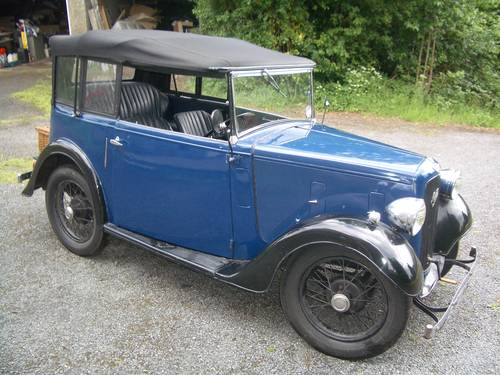 Port
Moresby after the war. Port Moresby, with its large aircraft and vehicle
dumps was a ‘boy’s own adventure’ with every self respecting kid having
an aircraft fuel tank as a canoe and most people driving surplus Jeeps.
Unlike today, the town was very safe and Ian can recall walking a mile
or so along a bush track alone at the age of five to catch a bus to
school with the only strict instructions being not to touch ammunition
or snakes. Port Moresby was littered with ammunition and bush fires
inevitably produced a cacophony of explosions and fireworks. Ian’s
parents owned 50 acres of the 6 mile hill at Port Moresby, including the
land on which the local radio station, 9PA, was located and their house
looked NE over Port Moresby’s famous Jackson’s Airfield and Ian
frequently walked the km or so to the airfield to wander through the
hangar and explore the various aircraft for hours at a time and this was
not discouraged by staff at the airfield.
Port
Moresby after the war. Port Moresby, with its large aircraft and vehicle
dumps was a ‘boy’s own adventure’ with every self respecting kid having
an aircraft fuel tank as a canoe and most people driving surplus Jeeps.
Unlike today, the town was very safe and Ian can recall walking a mile
or so along a bush track alone at the age of five to catch a bus to
school with the only strict instructions being not to touch ammunition
or snakes. Port Moresby was littered with ammunition and bush fires
inevitably produced a cacophony of explosions and fireworks. Ian’s
parents owned 50 acres of the 6 mile hill at Port Moresby, including the
land on which the local radio station, 9PA, was located and their house
looked NE over Port Moresby’s famous Jackson’s Airfield and Ian
frequently walked the km or so to the airfield to wander through the
hangar and explore the various aircraft for hours at a time and this was
not discouraged by staff at the airfield.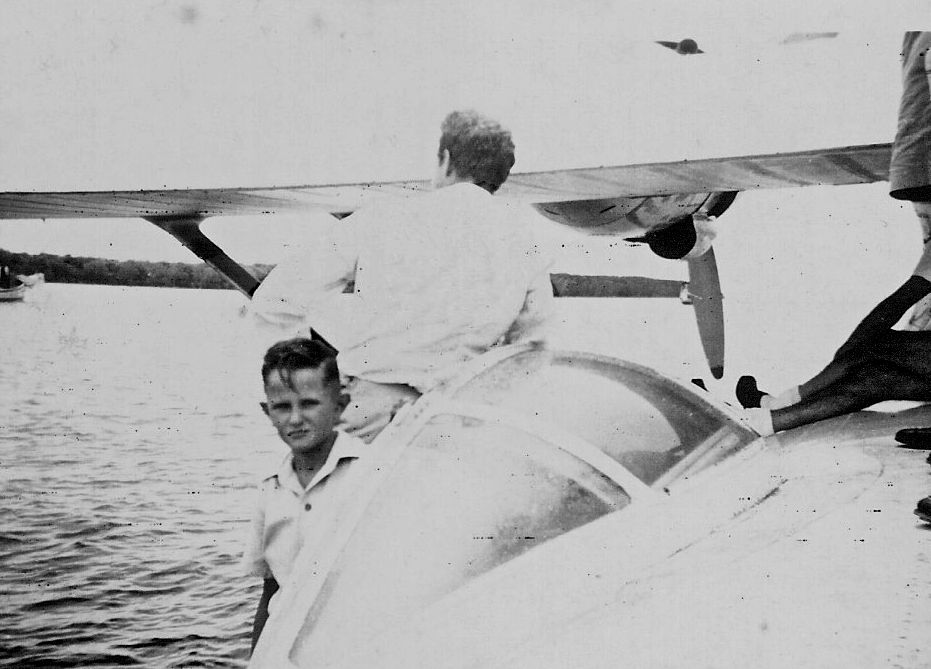
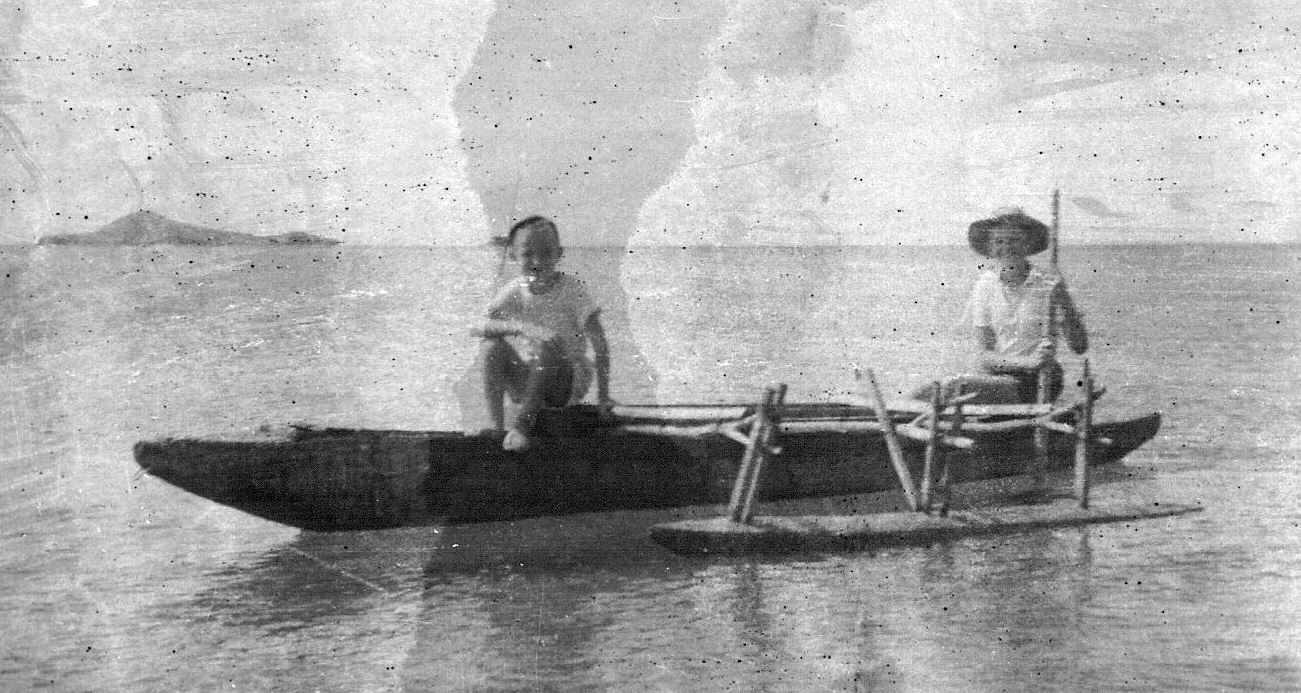 correspondence under the Qld system. This proved to be a great life as
Ian found that he could complete the day’s work by about 9.30am and
spend the rest of the day on his outrigger canoe living another ‘boy’s
own adventure’.
correspondence under the Qld system. This proved to be a great life as
Ian found that he could complete the day’s work by about 9.30am and
spend the rest of the day on his outrigger canoe living another ‘boy’s
own adventure’. 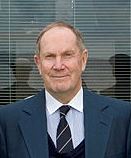 Bill
Collings never forgot this and took great delight in reminding me each
time our paths have crossed over the ensuing 50 or so years.
Bill
Collings never forgot this and took great delight in reminding me each
time our paths have crossed over the ensuing 50 or so years.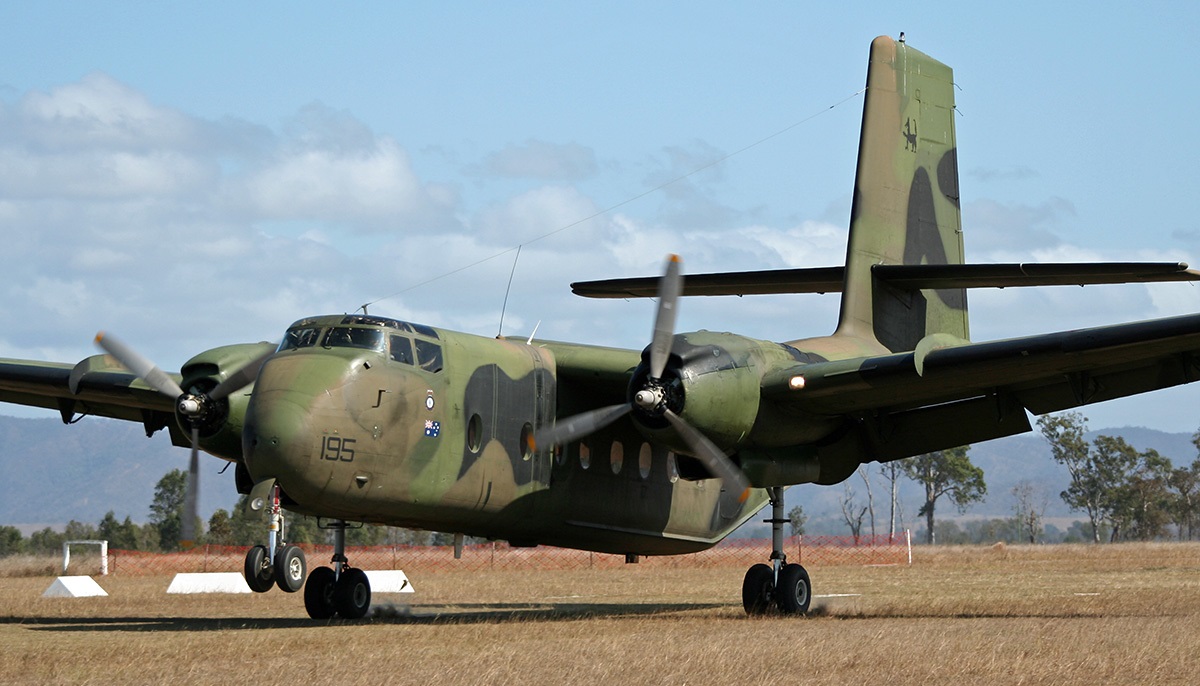
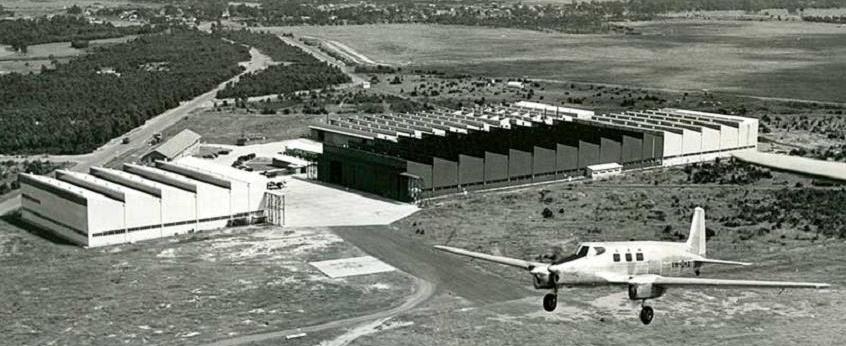
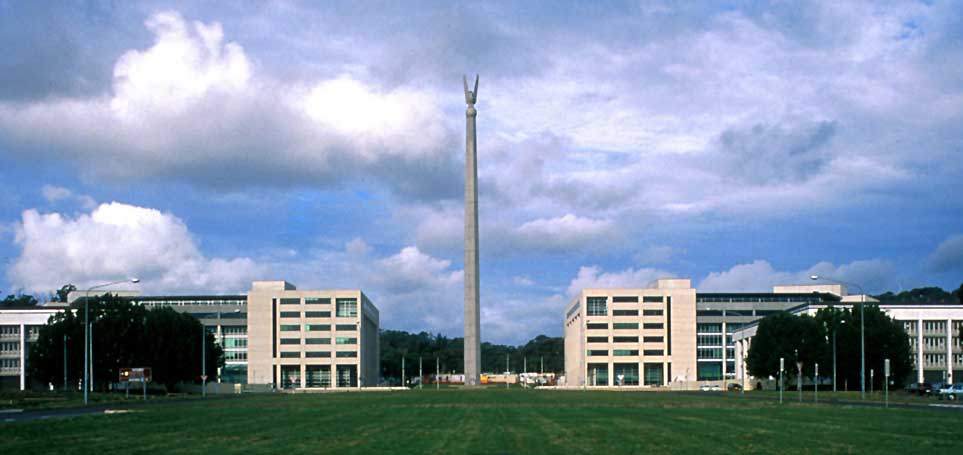
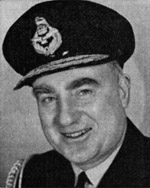
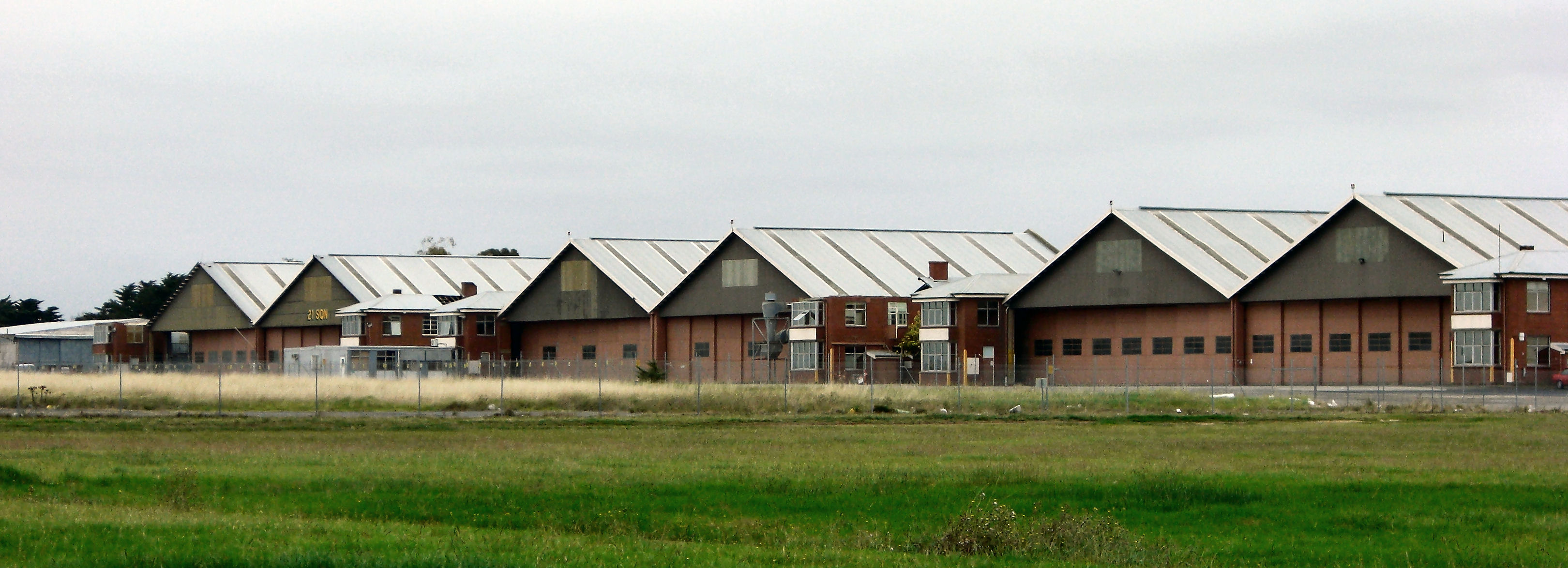
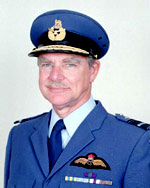 car’? Thinking that somehow it had rolled back in the car park, I
demurred when she then blurted out ‘oh, you don’t know, forget this
call; but, if you’re going to sell the car, Russ will buy it’. An hour
or two later I was to learn that I had 5 weeks to get to London to do
the RAF Staff Course and then, maybe, remain in the UK on the High
Commission staff. GpCapt (later AVM) Russ Law (right) returned to
Laverton a week or so later and said nothing so I ‘organised’ to bump
into him and he muttered something to the effect I hear I’ve bought your
car. How much is it? The car was a Mercedes that I had bought out of a
probate estate in Sydney and in immaculate condition so I started my
sales pitch only to be gruffly advised ‘don’t bother with the niceties -
how much?’. As the time for my departure approached and no further
conversation had taken place I started to worry; but, Russ came good at
the 11th hour. The sequel to this was some 8 years later when I returned
from Butterworth to HQOC as a GpCapt to work for Russ who was AOC. The
phone rang one morning ‘Tiny, Russ Law, that car you sold me is making a
funny noise, Can you come and have a look at it’. So I trotted over to
the residence Briarcliffe to find ‘my car’ much the worse for wear and a
slipped aircon drive contacting the radiator. I couldn’t resist opining
that this wasn’t bad after sales service particularly on an ‘as is,
where is’ car sold over eight years before. Russ did actually see the
humour in this.
car’? Thinking that somehow it had rolled back in the car park, I
demurred when she then blurted out ‘oh, you don’t know, forget this
call; but, if you’re going to sell the car, Russ will buy it’. An hour
or two later I was to learn that I had 5 weeks to get to London to do
the RAF Staff Course and then, maybe, remain in the UK on the High
Commission staff. GpCapt (later AVM) Russ Law (right) returned to
Laverton a week or so later and said nothing so I ‘organised’ to bump
into him and he muttered something to the effect I hear I’ve bought your
car. How much is it? The car was a Mercedes that I had bought out of a
probate estate in Sydney and in immaculate condition so I started my
sales pitch only to be gruffly advised ‘don’t bother with the niceties -
how much?’. As the time for my departure approached and no further
conversation had taken place I started to worry; but, Russ came good at
the 11th hour. The sequel to this was some 8 years later when I returned
from Butterworth to HQOC as a GpCapt to work for Russ who was AOC. The
phone rang one morning ‘Tiny, Russ Law, that car you sold me is making a
funny noise, Can you come and have a look at it’. So I trotted over to
the residence Briarcliffe to find ‘my car’ much the worse for wear and a
slipped aircon drive contacting the radiator. I couldn’t resist opining
that this wasn’t bad after sales service particularly on an ‘as is,
where is’ car sold over eight years before. Russ did actually see the
humour in this.
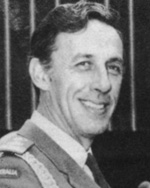 John
Hubble who was replaced in 1978 by AirCdre (later AVM) Mike Ridgway
(left). John Hubble was a rather dour character of very few words who I
thought I had fallen foul of as in those days assessed officers were not
allowed to see their Annual Reports and AirCdre Hubbles’ debriefs were
terse and minimal. However, when in the 1990’s all reports were
released, I was surprised to read how well I had actually been reported
by John Hubble. Mike Ridgway, on the other hand, along with his wife
Paula, were a breath of fresh air and we remained good friends long
after London.
John
Hubble who was replaced in 1978 by AirCdre (later AVM) Mike Ridgway
(left). John Hubble was a rather dour character of very few words who I
thought I had fallen foul of as in those days assessed officers were not
allowed to see their Annual Reports and AirCdre Hubbles’ debriefs were
terse and minimal. However, when in the 1990’s all reports were
released, I was surprised to read how well I had actually been reported
by John Hubble. Mike Ridgway, on the other hand, along with his wife
Paula, were a breath of fresh air and we remained good friends long
after London.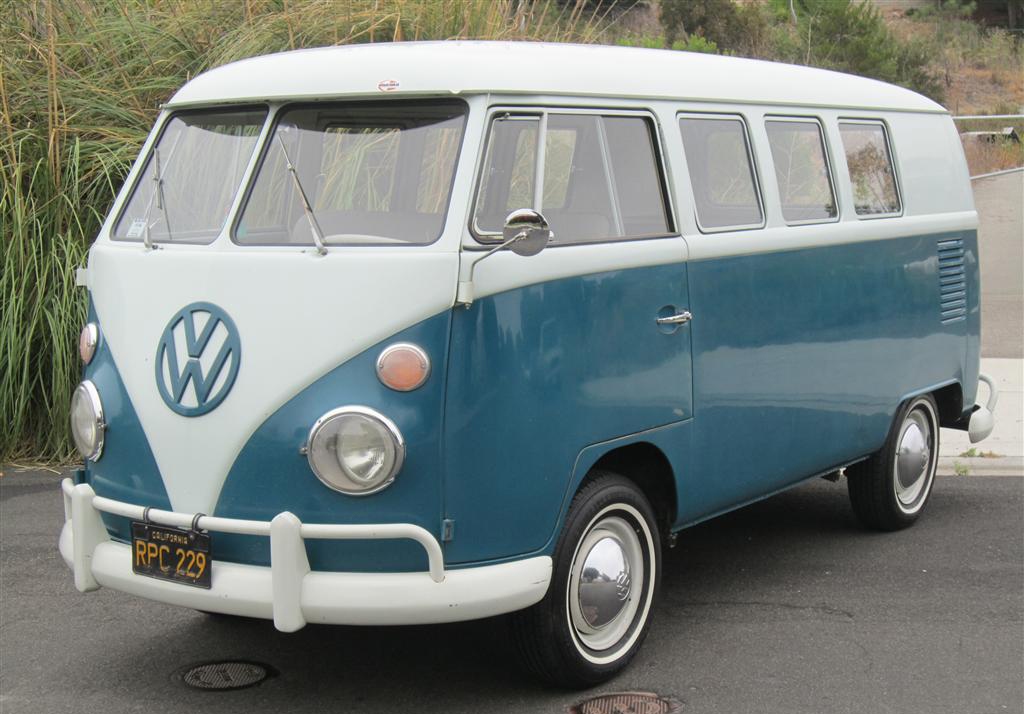 polish, some paint and a service they then went back outside Australia
House in May, Jun when the supply had run dry, as Australians flocked to
London for summer in Europe in a Kombi. Needless to say, I tried to do
this surreptitiously and ‘agreed’ that the practice of all of these vans
cluttering up the streets was ‘dreadful’. We toured the UK and Ireland
with our three children in our Kombis and did a long trip of nearly
10,000km through Italy and as far as Athens and then back through Tito’s
Yugoslavia. In fact, we looked seriously at driving from London as far
as we could on the way back to Aust and had the temerity to ask what
allowances I would get in lieu of the airfares; but, before this could
be resolved the security situation changed dramatically in 1978 and we
looked at another adventurous way home. This culminated in us visiting
Disneyland in LA followed by a week in the then little visited Cook
Islands and a camping holiday around NZ’s South Island with some friends
met in London.
polish, some paint and a service they then went back outside Australia
House in May, Jun when the supply had run dry, as Australians flocked to
London for summer in Europe in a Kombi. Needless to say, I tried to do
this surreptitiously and ‘agreed’ that the practice of all of these vans
cluttering up the streets was ‘dreadful’. We toured the UK and Ireland
with our three children in our Kombis and did a long trip of nearly
10,000km through Italy and as far as Athens and then back through Tito’s
Yugoslavia. In fact, we looked seriously at driving from London as far
as we could on the way back to Aust and had the temerity to ask what
allowances I would get in lieu of the airfares; but, before this could
be resolved the security situation changed dramatically in 1978 and we
looked at another adventurous way home. This culminated in us visiting
Disneyland in LA followed by a week in the then little visited Cook
Islands and a camping holiday around NZ’s South Island with some friends
met in London.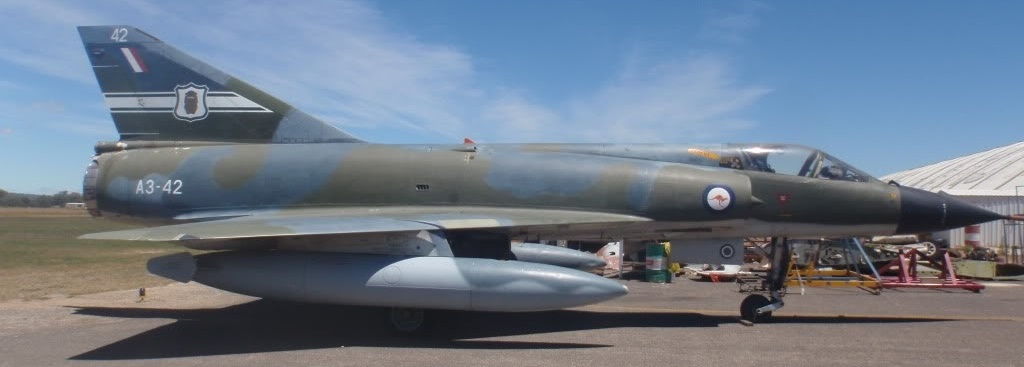
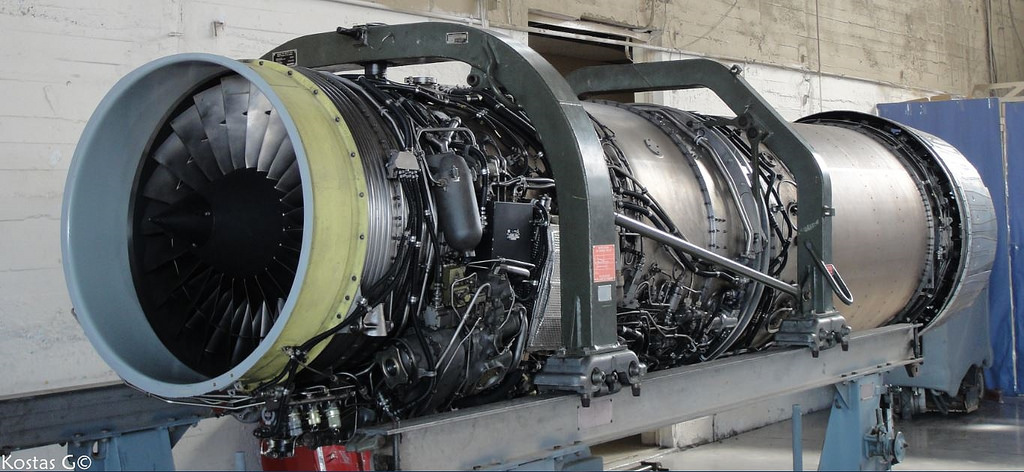
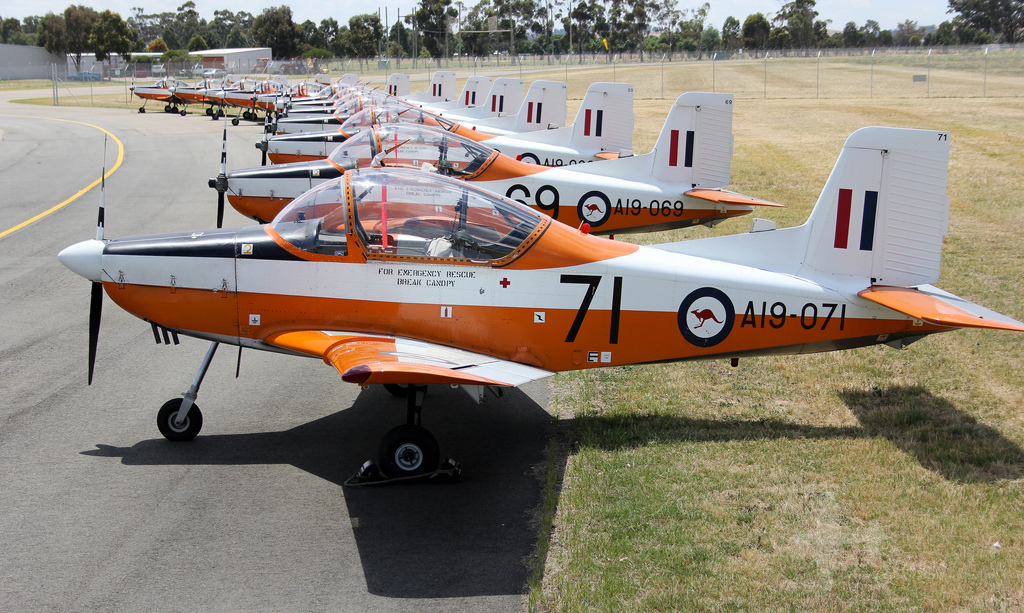
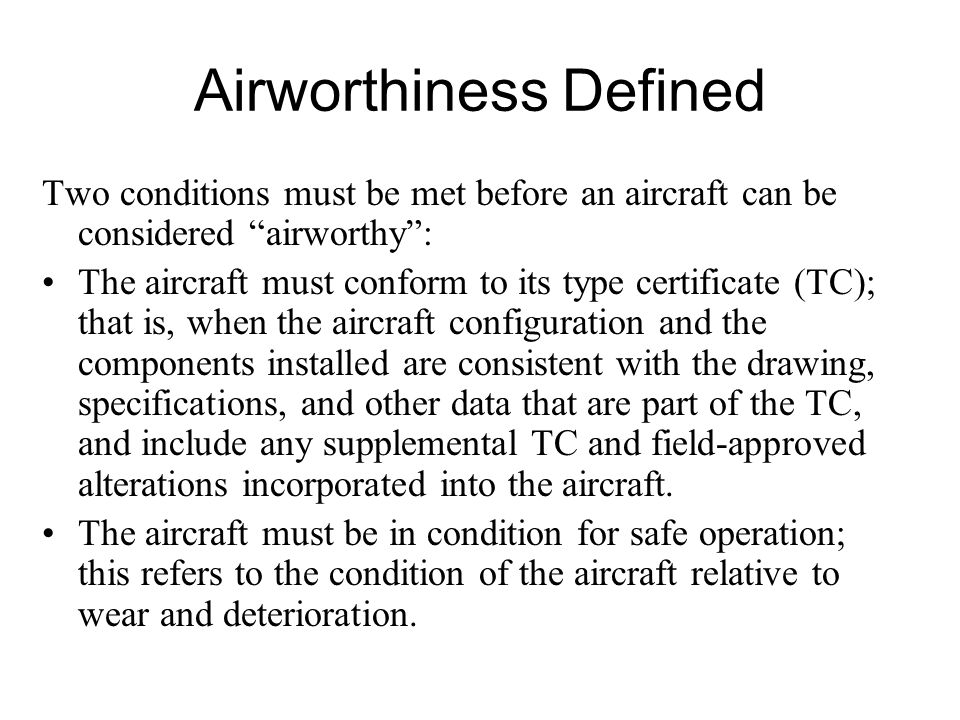 in CAFTS Division, we had a number of officers who, while not their
primary job, were prepared to assist (notably (Al Emmerson, again, whose
commitment to airworthiness carried over to the CAA after he left the
RAAF and SqnLdr (later AVM) Pete Nicholson a GD TP with an Engineering
degree who was at the time posted to CAFTS Division and with whom I had
had a close working relationship at ARDU) and the first real
Airworthiness Design Document - PD13 came into being. Some 10 years
later, in 1990, when I started the Directorate of Engineering Policy in
Canberra, this document was central as we developed airworthiness policy
for the RAAF.
in CAFTS Division, we had a number of officers who, while not their
primary job, were prepared to assist (notably (Al Emmerson, again, whose
commitment to airworthiness carried over to the CAA after he left the
RAAF and SqnLdr (later AVM) Pete Nicholson a GD TP with an Engineering
degree who was at the time posted to CAFTS Division and with whom I had
had a close working relationship at ARDU) and the first real
Airworthiness Design Document - PD13 came into being. Some 10 years
later, in 1990, when I started the Directorate of Engineering Policy in
Canberra, this document was central as we developed airworthiness policy
for the RAAF.